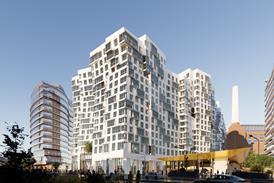‘Flat’ office structures are often anything but equal, writes Louise Rodgers

A practice leader once voiced his frustration to me about the hierarchical system so prevalent in architecture. “Sometimes I think we should just have two job titles – architect, and everyone else” he said.
His issue was that hierarchical structures – where someone progresses through the ranks from newly-qualified architect to associate director, or higher, passing through several layers of middle management – often evolve to be unwieldly and, as organisations grow, can reach a point where they are no longer fit for purpose.
Promotions may get made because they are commensurate with age and years of service, or used as an engagement or retention tool, losing any relationship to contribution made or profit contributed. Multiple layers of management can make salary scales unworkable, or unfair, and decision-making cumbersome and inefficient.
The alternative is to adopt an organisational model with relatively few or no levels of middle management between the senior executives or business owners, and frontline employees.
In some sections of the media these so-called flat hierarchies have been positioned as a necessity for the successful companies of tomorrow. There is even a new word, ‘holacracy’, used in some contexts, such as Silicon Valley, to describe emerging systems of self-management, particularly in start-ups, where leadership models are not subject to traditional hierarchy of command.
These flat structures, less wedded to management processes, are thought to encourage innovation and, in a fast-moving context such as tech, be more agile and responsive. They can also speed-up decision making, so that new products come to market unfettered by multiple layers of bureaucracy.
But does this model translate to architecture? Either start-ups or larger, more established studios? Of course, within emerging and popular structures of ownership, such as the Employee Ownership Trust (EOT) model, some democratisation of communication and decision-making is essential, but how workable is it in, for example, founder-led, and owned practices?
If architectural leaders truly practice humility, then it shouldn’t matter what kind of structure they design for their practice
For our podcast Coaches On The Couch, my co-host Rachel Birchmore and I often speak with leaders in the sector who say their studios operate a flat hierarchy, and we are a little curious when we hear this because we can see the challenges inherent in this model.
First of these is that some people are more equal than others, either because they make themselves more visible or because they become part of a ‘clique’ that gets noticed. Informal, dysfunctional hierarchies may take the place of formal ones.
Flat hierarchies may favour those who have the personality type and confidence to put themselves forward, with significant consequences for diversity and inclusion. It takes an observant leader to spot the introvert who has the potential to make a significant contribution. Or the neurodivergent genius. And, unfortunately, it remains true that most leaders are most likely to recognise and favour people who to some extent at least, remind them of themselves.
Another challenge is that supervision and oversight are critical to the profession of architecture, and these are time-consuming and much easier to organise in a hierarchical structure. Unless individuals have equivalent skills, knowledge and motivation, the absence of a layer of people who take specific responsibility for the work of others can make it harder to maintain a consistent quality of output.
In founder-led practices, flat hierarchies may also be open to exploitation by those in charge. Without a strong layer of senior management, leaders’ bad behaviour can go unchallenged. It may go unchallenged anyway, but in a more traditional pyramid-type structure there are usually a few individuals who wield sufficient influence to check the behaviour of the principal when this is needed.
It takes a strong personality to start a practice and if that leader doesn’t have the self-awareness to recognise when their own ego dominates, for example to the extent that great ideas from other people (or the people themselves) whither on the vine, this can impact company health and growth.
It seems logical that cutting through layers of hierarchy and operating a flatter if not flat structure can lead to efficiencies, benefits, and opportunities. It can also result in empowered employees taking the lead and following their passions, for example for the leadership of others or sustainability innovations.
But I would argue that for these flatter structures to be successful there needs to be a clearly defined purpose that everyone can align to. There also needs to be a transparency around growth plans and finances so that individuals can find their place within the system; recognising the restrictions that may be present, but able to define their own pathway through these to pursue opportunities and achieve their ambitions, for their own benefit and for the benefit of the wider practice.
Finally, there need to be more leaders who are capable of being humble; encouraging their employees to speak up, and providing the safe psychological space they need to do so, and respecting differences of opinion. They must also be prepared to listen to and champion the best ideas in their team, wherever they may come from.
If architectural leaders truly practice humility, then it shouldn’t matter what kind of structure they design for their practice.
Postscript
Louise Rodgers is Building Design’s professional coach. A personal and business coach, she co-created and co-delivers Step Up, a leadership development programme for built environment consultants.
Do you have a question for Louise? If so email louise@eidyia.co.uk. She will use the most interesting in her columns but cannot enter into individual correspondence.
















No comments yet